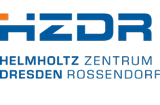Liquid Metal Ion Sources
Introduction
Liquid metal ion sources (LMIS) are ion sources with a very high brightness, a very small emission area so that they are preferably used in focused ion beam systems. These sources can be distinguished in needle and capillary type sources. When a strong electric field is applied at the end of the needle or the cappilary the liquid metal forms a sharp tip (Taylor cone) with a jet where ion emission occurs. Source materials are either pure metals with low melting points (most common is gallium) or eutectic alloys.In Rossendorf the following LMIS have been investigated and/or used in FIB systems: Ga, Li, AuSi, AuGe, AuGeSi, CoNd, CoGe, ErNi, ErFeNiCr, NiB, GaIn, .... .
Preparation
In the FIB laboratory the equipment and experience exist for fabrication and development of LMIS.Two different types of LMISs have been developed:
- Source with hairpin-like tungsten emitters and direct heating
- Capillary type source with tantalum needles and indirect electrical heating
In a vaccum chamber the sources are cleaned by heating. Then the wetting of the needles and the filling of the reservoir is performed by dipping the heated needles or cappilary tips in the molten metal or alloy which is in an electrically heated crucible.
Characterisation
Experimental setup exists for the following measurements of LMISs:- Current-voltage characteristics, emission stability and life-time
- Mass spectra
- Angular distribution and angular intensity by means of a rotating Faraday cup
- Ion Energy distribution of element LMISs (energy width and deficit) with a retarding field energy analyser
- Energy distribution of the ions depends on their mass and charge but also on current and temperature of emission.

